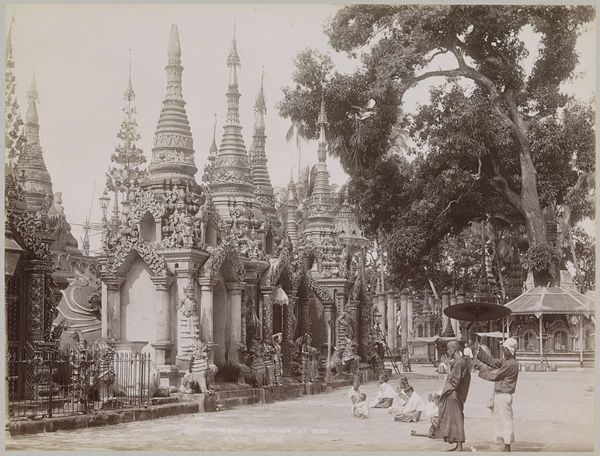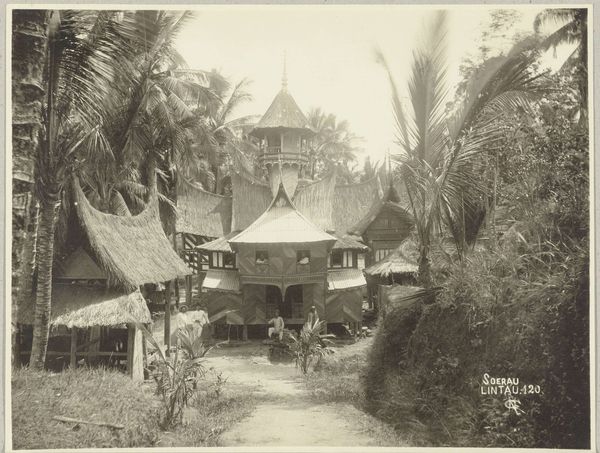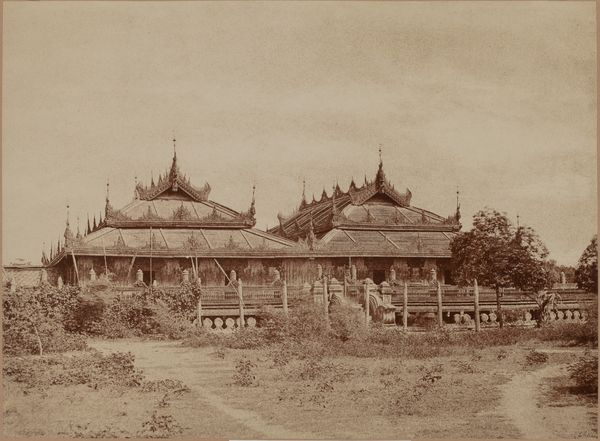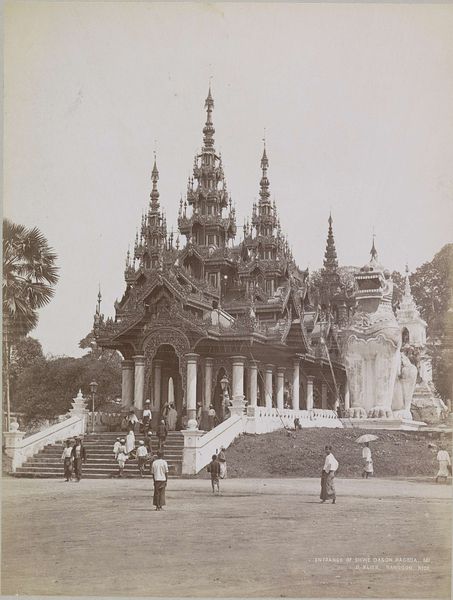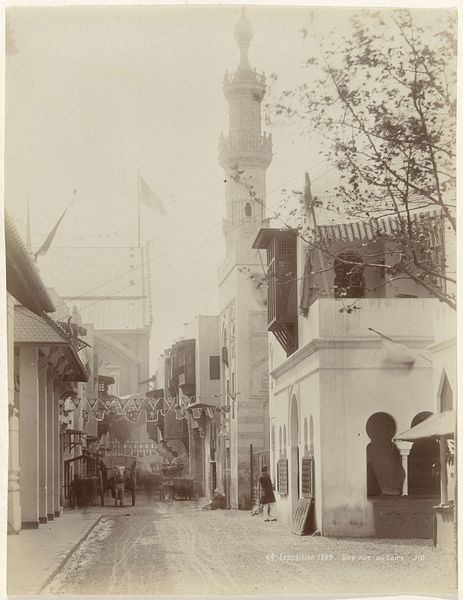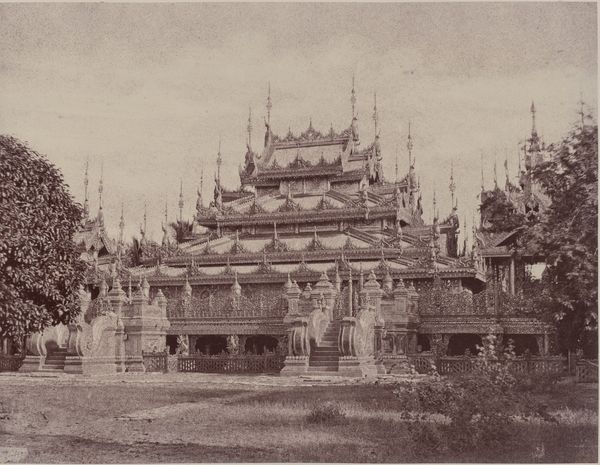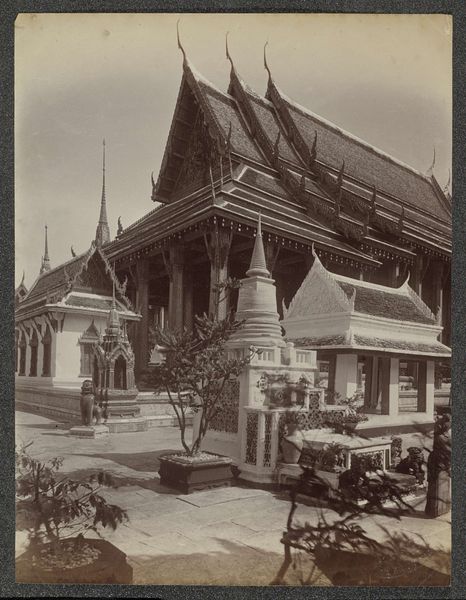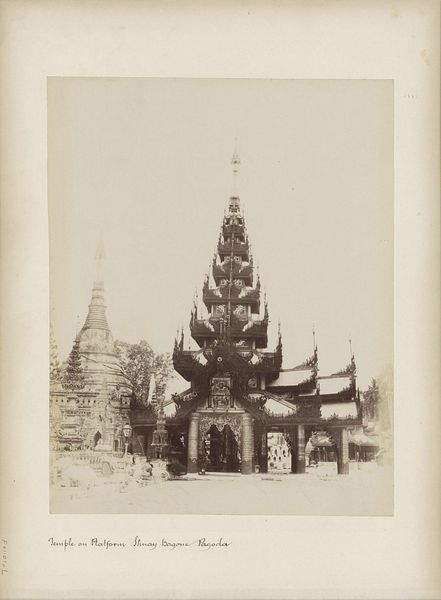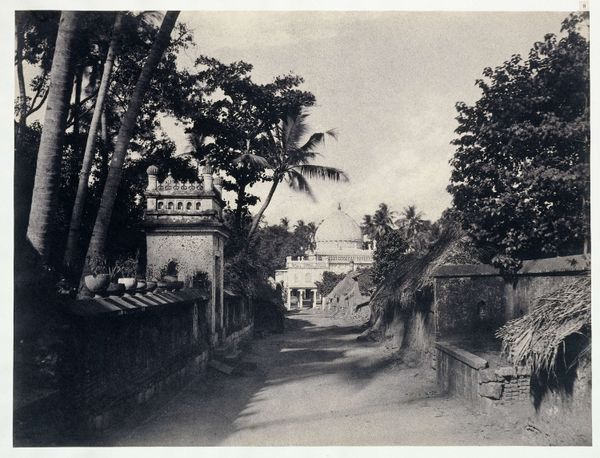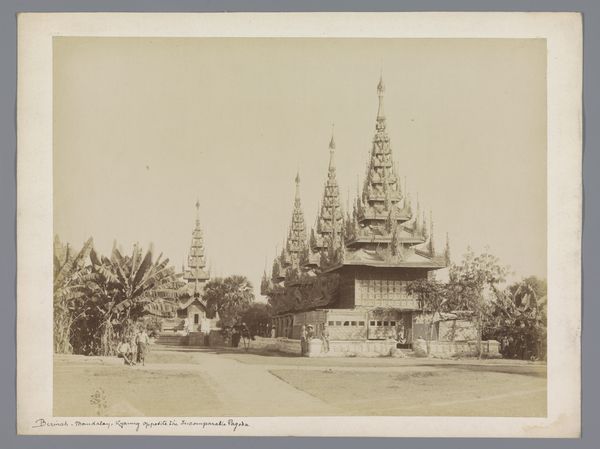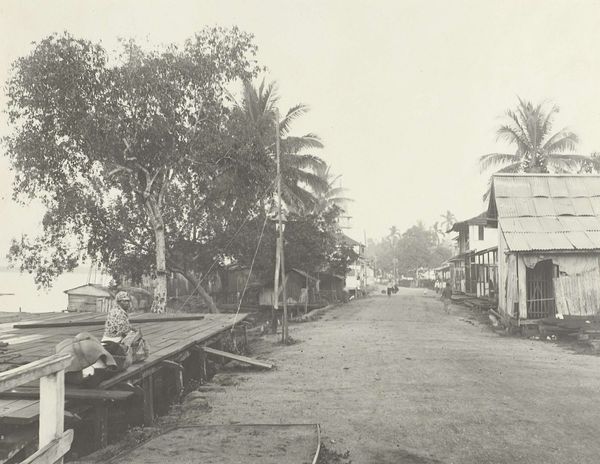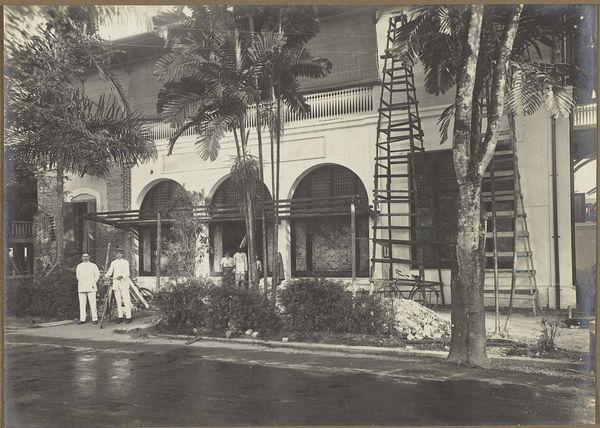
albumen-print, photography, albumen-print
#
albumen-print
#
scenic
#
asian-art
#
landscape
#
photography
#
monochrome photography
#
albumen-print
#
monochrome
Dimensions: height 266 mm, width 205 mm, height 329 mm, width 243 mm
Copyright: Rijks Museum: Open Domain
Curator: Let’s turn our attention to this photograph titled “Shwedagon Pagode, Rangoon.” The print is an albumen print made sometime between 1895 and 1915 by P. Klier. Editor: What immediately strikes me is the serenity of the scene, despite the probable hustle and bustle that must've existed. There's a stillness, a sort of suspended animation in the way the pagoda looms ethereally in the distance. The almost sepia tones only amplify that feeling. It's as if time itself is taking a breath here. Curator: Indeed. The albumen print, a popular photographic process in that era, gives the image a unique warmth and tonality. Look closely and you'll notice the meticulous detail captured—from the intricate carvings on the buildings to the texture of the palm trees swaying gently in the foreground. The photographer's composition deliberately draws our eye towards the distant pagoda, emphasizing its symbolic importance. Editor: It's more than just a pretty picture, isn’t it? The pagoda, shrouded in a soft light, definitely represents something greater, like the spiritual heart of the city, its promise of something transcendent amid the everyday. You almost feel like you are about to step into the frame yourself and experience it firsthand, that feeling of inner peace. Curator: Precisely! Pagodas are sacred places of worship. By positioning it prominently, P. Klier isn’t just documenting a landscape. He is encapsulating a belief system, and the photograph serves as a visual record of cultural continuity. Even though empires rose and fell, that sense of the divine continues to be embodied in this pagoda. Editor: Makes you wonder about the people in the photo, too. What were their lives like? Did they find solace in the shadow of the pagoda? Curator: It is a reminder of how potent visual imagery can be in communicating not only historical realities, but also more subtle, deeply rooted emotional connections that endure across time and culture. Editor: I concur! You’ve turned what I thought was a lovely snapshot into a mirror reflecting both a specific time and the timelessness of faith, that’s quite special.
Comments
No comments
Be the first to comment and join the conversation on the ultimate creative platform.
